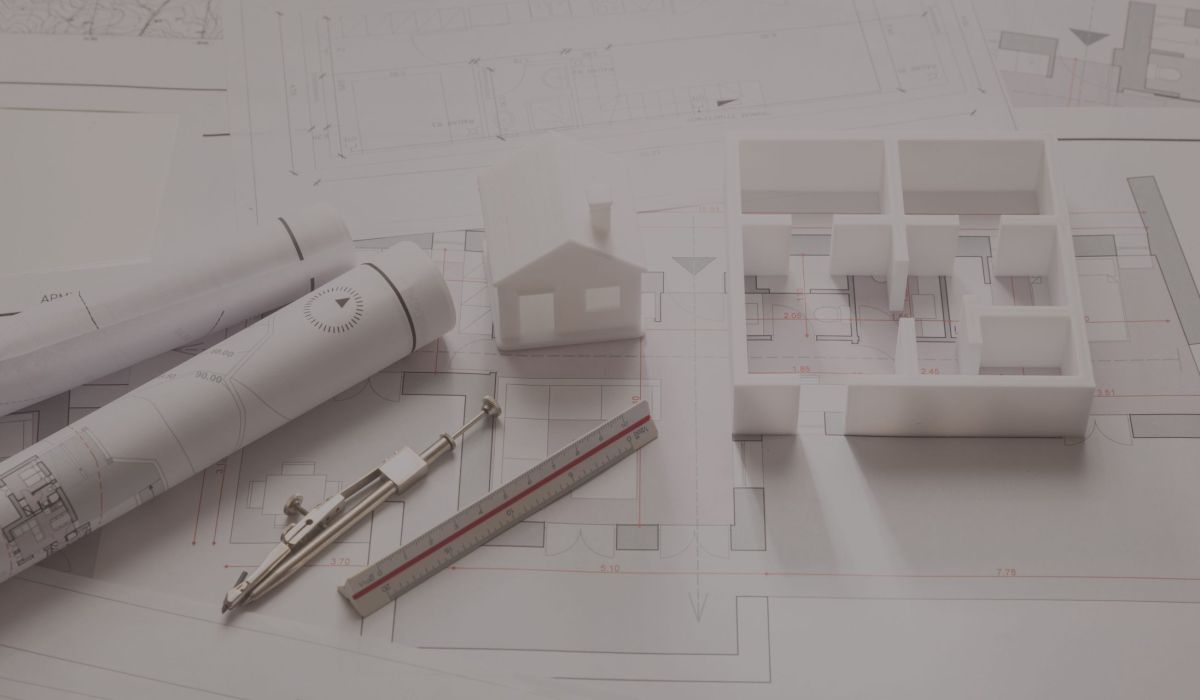
How To Create Planning Drawings
Planning drawings are critical in designing and obtaining approval for construction or renovation projects. These technical documents provide a detailed visual representation of the proposed development, conveying the scale, layout, and appearance to planning authorities, contractors, and stakeholders.
Whether you’re an architect, builder, or homeowner looking to extend your property, understanding how to produce accurate and effective planning drawings can significantly impact your application’s success and your project’s efficiency.
This guide will walk you through the essentials of creating planning drawings, from understanding regulatory requirements to employing best practices in visual communication.
With a focus on clarity, precision, and adherence to relevant guidelines, you’ll learn how to craft drawings that meet the necessary standards and facilitate a smoother approval process.
What Is Planning Permission?
Planning permission is a formal approval granted by local authorities, allowing the development or alteration of land or buildings within a specific jurisdiction.
It is a critical step in ensuring that any proposed construction work complies with local planning policies, including considerations related to the environment, infrastructure, and the area’s overall aesthetic and functional harmony.
Before commencing most building projects, obtaining planning permission, ranging from major developments to minor home extensions, is essential.
The process involves submitting detailed plans and documents for review to ensure that the proposed changes align with strategic development goals and do not adversely affect the surrounding community or landscape.
Failure to obtain planning permission where it is required can lead to enforcement action, including the alteration or removal of unauthorised developments.

Planning Drawings – What Exactly Are They?
Planning drawings are detailed illustrations used within the planning permission process to showcase a proposed development or alteration to existing structures or landscapes. These drawings serve as a communication tool, illustrating to planning authorities and stakeholders how a project will look upon completion.
Typically, they include a variety of views, such as site plans, elevations, floor plans, and cross-sections, providing a comprehensive overview of the project’s scale, design, and impact on its surroundings. Created with precision and adherence to specific guidelines, planning drawings must clearly articulate the proposed changes, ensuring they are easily understandable by non-specialists while meeting the stringent requirements set out by local planning departments.
Their accuracy and clarity are crucial for facilitating the planning permission process, enabling authorities to make informed decisions regarding the viability and suitability of the proposed development within the community.
When are Planning Drawings Required?
Planning drawings are typically required when applying for planning permission, which is necessary for many construction and development projects. This includes but is not limited to, new buildings, significant alterations or extensions to existing structures, changes in the use of a building or land, and developments that may affect the external appearance of a property or its impact on the local environment.
The requirement for planning drawings extends to residential and commercial projects, ensuring that any proposed changes harmonise with local planning policies, aesthetic standards, and community interests.
What Common Projects Require Planning Permission Drawings?
New Build Developments: Constructing new residential or commercial buildings.
Extensions: Adding to existing structures, such as single or multi-storey extensions to homes or business premises.
Loft Conversions: Transforming attic spaces into habitable rooms, often involving alterations to the roof.
Conservatories: Adding sunrooms or conservatories to extend living spaces.
Garage Conversions: Changing the use of a garage from a storage or parking space to a living area.
Outbuildings: Constructing separate structures on a property, such as garden sheds, workshops, or home offices.
Change of Use: Altering the designated use of a building or land, such as converting a residential property into a commercial space.
Major Renovations: Undertaking significant refurbishments that alter the external appearance or structure of a building.
Demolition and Rebuilding: Tearing down existing structures and constructing new ones.
Landscaping Changes: Significant alterations to the layout or use of outdoor spaces affect the appearance or use of the area.

What Drawings Do You Need For Planning?
For a planning application, you typically need a set of drawings that provide a comprehensive and detailed representation of the proposed project.
These often include site location plans, which show the proposed development in context with its surrounding area; block plans, offering a closer view of the site and its immediate boundaries; existing and proposed elevations, illustrating the external appearance before and after the development; floor plans, detailing the layout of each level of the building; and cross-sections, giving a vertical slice through the structure to show construction details.
Additionally, roof plans might be required to depict the design and shape of the roof, especially for projects where the roofline will change.
These drawings must be accurately scaled, clearly annotated, and detailed enough to allow planning authorities to understand the full scope and impact of the project, ensuring that all aspects of the development are considered during the decision-making process.
General Guidelines For Planning Drawings
When preparing planning drawings, it’s crucial to adhere to general guidelines to ensure they meet the necessary standards for submission.
These drawings should be clear, accurate, and to a recognised scale, typically 1:100 or 1:50 for detailed plans and 1:1250 or 1:500 for site location plans. All drawings must be legible, with dimensions and annotations that communicate the scope and detail of the proposal. It’s important to include existing and proposed views to understand the changes being made comprehensively.
Use a consistent and professional drawing style, with sufficient detail to illustrate the project fully but without overwhelming the plan with unnecessary information. Ensure the drawings include a title block with the project name, drawing title, scale, date, and revision number.
Adherence to these guidelines will facilitate the planning process, making it easier for planning authorities to assess and make informed decisions on your application.
Do Planning Drawings Need To Be In A Specific Format?
Planning drawings should adhere to specific formatting guidelines to ensure they are suitable for planning authorities to review. They must be presented in a clear, professional manner, usually in digital format or as printed copies, depending on the specific requirements of the local planning department.
The drawings should be scaled accurately, commonly at 1:100 or 1:50 for detailed plans and 1:1250 or 1:500 for site location plans, ensuring that every aspect of the proposed development is represented proportionally. It’s also important to use a standard drawing convention, consistent style and symbols that follow industry norms to depict various elements like boundaries, buildings, and landscaping.
Furthermore, each drawing should include a title block with essential information such as the project title, site address, drawing number, scale, and date.
Adhering to these formatting standards ensures that your planning drawings are easily interpretable by planning officers and other stakeholders involved in the planning process.

How Are Drawings Submitted To The Planning Department?
Drawings are typically submitted to the planning department either online through the local authority’s planning portal or in physical form, depending on the specific requirements of the council.
Online submissions have become increasingly common and preferred due to convenience and efficiency. When submitting online, you must upload your planning drawings in a compatible digital format, usually PDF files, ensuring they are correctly named and scaled according to the submission guidelines.
For physical submissions, drawings should be printed on durable paper at the correct scale, clearly labelled, and folded to a manageable size, usually A4, for easy handling. A completed application form and any other required documents should be submitted along with the drawings.
It’s essential to check your local planning authority’s specific submission requirements and guidelines to ensure your application is compliant and processed smoothly.
How Much Does It Cost For An Architect To Draw Plans?
The cost of hiring an architect to draw up plans can vary widely depending on several factors, including the project’s complexity, location, and the reputation and experience of the architect.
Architects typically charge a fixed fee, a percentage of the total project cost (usually 5% to 15%), or an hourly rate for residential projects. Minor projects, such as small home extensions or alterations, cost anywhere from a few hundred to a few thousand pounds.
More complex or larger-scale projects, like new builds or significant renovations, can climb architectural fees significantly, potentially reaching tens of thousands of pounds.
It’s important to discuss and agree upon the fee structure with your architect upfront and ensure that the scope of work, deliverables, and additional costs (such as planning application fees or expenses for required surveys) are clearly outlined in the contract.
Get in touch with our team of architects today for more information!



